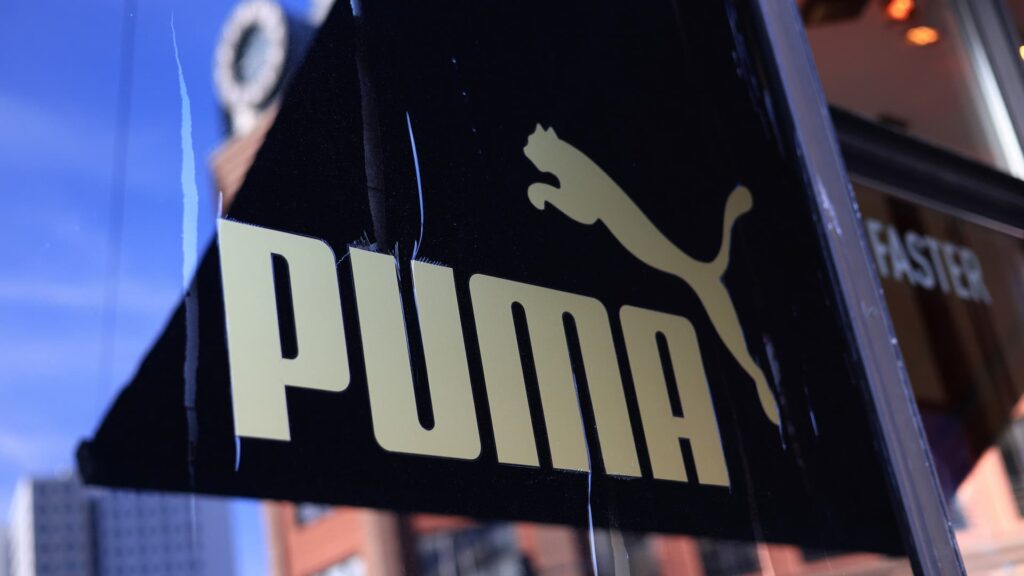Puma SE, the renowned German athletic brand, is navigating through turbulent waters as it confronts significant challenges, including excess inventory and rising marketing costs. With the appointment of new Chief Executive Officer Arne Freundt, the company recently forecasted slower profit growth. As interest from potential buyers like Chinese firm Anta Sports emerges, experts debate the implications for Puma’s future and market positioning.
| Article Subheadings |
|---|
| 1) Puma’s Declining Profit Forecast |
| 2) Potential Buy-Out Interest |
| 3) CEO’s Turnaround Strategy |
| 4) Tariffs and Market Challenges |
| 5) Shareholder Dynamics and Valuation Issues |
Puma’s Declining Profit Forecast
Puma is facing what industry insiders describe as a significant downturn. Recently, forecasts indicated that profit growth would experience a slowdown, a concern that has heightened following the company’s struggles with excess inventory and increased marketing expenses. Arne Freundt, the newly appointed CEO, has emphasized the need for strategic adjustments as Puma grapples with the aftermath of the pandemic. Although there was initially a surge in revenue during COVID-19, sales have since plunged, making the brand’s future uncertain.
The company’s stock recently reflected this turmoil; shares depreciated to their lowest levels in over a decade. Reports indicate that Puma’s shares have endured a staggering drop of over 50% year-to-date, a stark warning to stakeholders about the brand’s viability in an increasingly competitive sportswear market.
Potential Buy-Out Interest
Adding to Puma’s woes is the public speculation surrounding potential buy-outs. Sources have indicated that Anta Sports, a prominent Chinese athletic company, is contemplating a bid for Puma. This development is viewed within the business community as potentially transformative, particularly for Anta, which aims to leverage Puma’s existing brand recognition to strengthen its foothold in Western markets.
Market analysts suggest that acquiring Puma could serve as a significant opportunity for Anta, given its experience in revitalizing underperforming assets. While Anta has shown interest, both Puma and Anta have refrained from substantial comments regarding ongoing discussions. Puma is currently prioritizing internal recovery strategies, thus complicating any external acquisition talks.
CEO’s Turnaround Strategy
The challenges at Puma have prompted Arthur Hoeld, who became CEO earlier this year, to outline a comprehensive turnaround strategy. His plan focuses on streamlining operations, which includes job cuts and narrowing product lines. Hoeld emphasized the necessity for Puma to elevate its operational efficiency in light of declining sales, stating that the company aims to “clean up PUMA’s distribution” and improve its overall cash management.
Under Hoeld’s leadership, Puma has publicly committed to becoming a “Top 3 global sports brand.” Nevertheless, the company’s recent earnings report revealed a disturbing trend: quarterly sales have plummeted by double digits, provoking concern among stakeholders.
Tariffs and Market Challenges
Adding layers of complexity to Puma’s challenges are external pressures such as tariffs and shifting consumer trends. The U.S. tariffs on imports have particularly affected Puma’s operational costs, exacerbating inventory issues and limiting profitability. Earlier this year, the company revised its sales forecasts downward, anticipiпg a low double-digit sales decline rather than the previously expected growth.
Puma’s report also mentions muted brand momentum as a key issue. Consumer engagement has been waning, complicating recovery efforts. The competitive landscape within the sportswear market is cutthroat, with many rival brands also looking to capture the attention of consumers. As such, navigating through these challenges has become vital for Puma’s future.
Shareholder Dynamics and Valuation Issues
The landscape of Puma’s ownership is another vital factor in its current plight. Artemis, the holding company associated with the billionaire Pinault family, controls a significant 29% stake in Puma. The financial strategies of Artemis, including their recent spending tendencies, could impose further hurdles for Puma, especially if the firm’s valuation expectations do not align with market realities.
As a major shareholder, Artemis’s stance and potential decisions will likely play a crucial role in any discussions surrounding buy-outs or investments. Observers are watching closely to see how these dynamics evolve, especially considering Puma’s current challenges in valuation and performance.
| No. | Key Points |
|---|---|
| 1 | Puma’s profit forecasts have declined sharply, impacted by high inventories and rising costs. |
| 2 | Anta Sports is reportedly considering a buy-out of Puma, which can significantly influence both companies. |
| 3 | CEO Arthur Hoeld has introduced a turnaround plan aimed at revamping Puma’s operations and product line. |
| 4 | Puma faces external challenges including tariffs and heightened competition in the sportswear market. |
| 5 | The dynamics of major shareholder Artemis may significantly impact Puma’s business trajectory moving forward. |
Summary
Puma is navigating a complex landscape characterized by deteriorating financial metrics and heightened external pressures. Amid efforts for a strategic reset led by CEO Arthur Hoeld, the company’s future remains uncertain, particularly as it contemplates potential buy-outs from firms like Anta Sports. The implications of these developments will be pivotal not only for Puma but also for the broader athletic apparel industry, as stakeholders closely monitor the company’s recovery trajectory.
Frequently Asked Questions
Question: What challenges is Puma currently facing?
Puma is facing multiple challenges, including a significant decline in profit forecasts, excess inventory, high marketing costs, and external pressures like U.S. tariffs.
Question: Who is interested in purchasing Puma?
Chinese company Anta Sports is reportedly considering a bid to acquire Puma, viewing it as an opportunity to expand into Western markets.
Question: What is the outcome of Puma’s recent sales performance?
Puma has reported a disturbing trend, with quarterly sales falling on a double-digit basis, contributing to the company’s downward revision of future sales forecasts.
